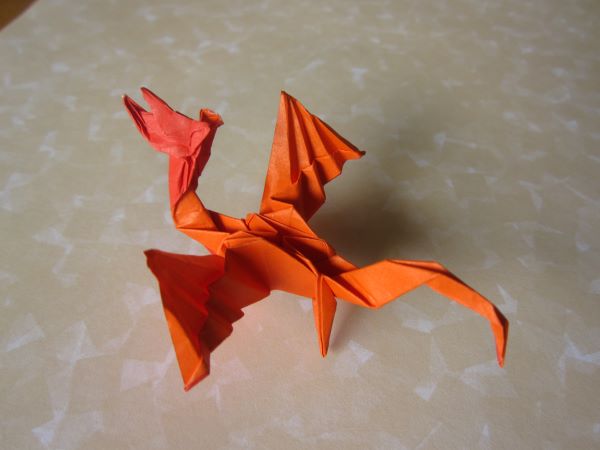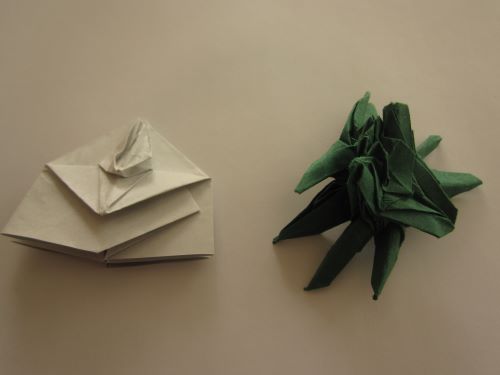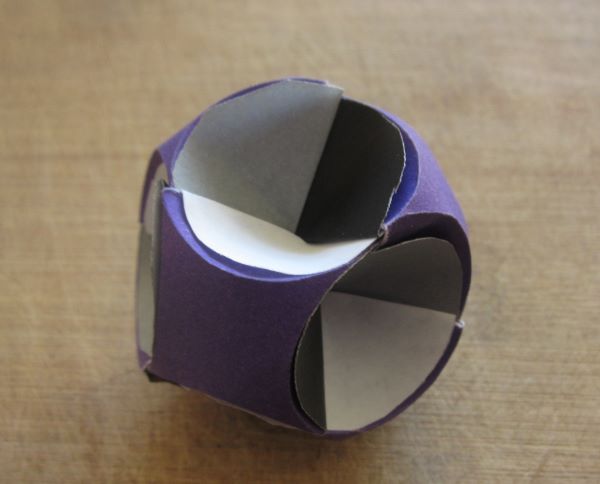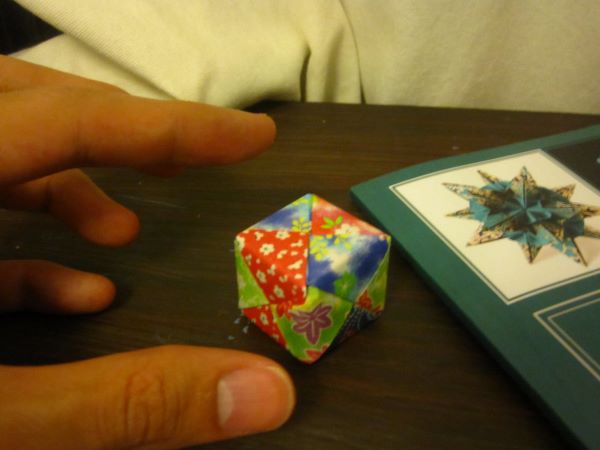
KNL Dragon designed by Robert Lang
This is a neat origami model that can be found in Origami Design Secrets, by Robert Lang. Origami Design Secrets is basically a textbook, so it’s here to demonstrate the “grafting” technique. Grafting can be used to create a model with one piece of paper, that might otherwise require multiple sheets of paper. This model, in its original form designed by Kunihiko Kasahara, took three pieces of paper. Robert Neale made a contribution that simplified it to two sheets of paper. Kasahara’s head design was combined with a model by Robert Neale, to make a two-piece design. Finally Robert Lang made a design that only used one sheet. It’s called the Kasahara-Neale-Lang Dragon, or KNL Dragon.
Among the many models in the book, this is a favorite. When I’ve shown this to other origami people, they often ask how to make one. You’re welcome to try this video, but it’s only recommended for experienced origamists. It involves some very tricky (and small!) sink folds–something I notice Robert Lang tends to scatter all around his designs like they’re nothing! Nonetheless, it’s a lovely model with a particularly great silhouette.






